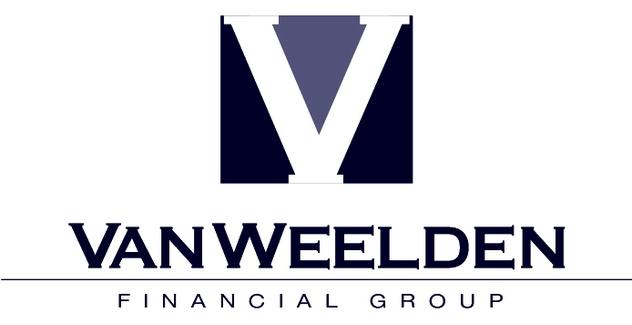

Tax Planning
There’s a tremendous difference between tax planning and tax preparation. Effective tax planning can save you thousands, tens of thousands, or even hundreds of thousands of dollars over your lifetime.
Think about it – when your accountant or tax preparer sits down to prepare your taxes they are dealing with numbers from last year. It’s already over and in the books. Nothing can be changed, except for maybe a deduction here or credit there. Their job is to ensure you pay the taxes you owe, in accordance with local, state, and federal tax laws, and no more.
This is a necessary and valuable service but it’s not the same as tax planning. The typical tax preparer simply doesn’t have the time or expertise to provide truly comprehensive, long-term tax planning.
What’s worse is that most financial advisors don’t have the expertise or inclination to provide this service either. In fact, most advisors will tell you straight out that they cannot, and will not, provide tax planning services. (Just as they cannot and will not provide advanced income planning, Social Security, Medicare, risk management, survivor, or estate planning.)
Ironically, most will tell you to seek the advice of your accountant regarding tax planning matters. But as we’ve explained, tax preparation and tax planning are completely different.
Tax planning involves looking down the road at the next twenty or thirty years and taking proactive steps to minimize the amount of taxes you and your loved ones will pay over your remaining lifetime – and perhaps into the next generation.
We’ve yet to meet a single individual who wanted to pay more taxes than what is legally required. Yet most people are doing, and will continue to do, just that, year after year, because they don’t have a comprehensive, proactive tax plan in place. In fact, in my twenty-five years of providing holistic retirement planning services, I’ve yet to see a single person walk through our door with a comprehensive, retirement tax plan.
What does a comprehensive, retirement tax plan look like and what does it do? It evaluates all the critical areas of retirement planning, including investment planning, income planning, healthcare planning, survivor planning, estate planning, and risk management planning, from a tax-sensitive perspective.
The first obstacle to creating an effective tax plan is failing to have all the other aspects of your financial plan coordinated. This is extremely common, as most people have never fully addressed each of these areas of need, or if they have, they have done so separately, so none of their planning is truly coordinated, leaving significant gaps in their planning.
We believe the transition into retirement is the single most important financial paradigm shift most people will make in their lifetime. As such, we believe every single person within five years of retirement should completely re-evaluate their financial planning needs in light of this new stage of life and should transition to an advisor who specializes in providing truly holistic, in-depth, retirement planning services. Otherwise, there will always be major gaps in their planning.
The second obstacle to creating an effective tax plan is finding someone with the expertise and inclination to help you develop a plan. Let’s face it, most so-called financial advisors simply manage investments. That’s how they’re paid. They’re not paid to help you with your tax planning, Social Security, Medicare, survivor planning, or estate planning. So, they don’t. And if they claim to do so, they’re very unlikely to invest the time, energy, and expense to learn all they need to know to do so effectively. Which is worse, not getting advice or getting bad advice?
That’s where we’re different. We believe retirement is a process, not an event. And the retirement years require a completely different approach to financial planning. It must be truly holistic, and it must integrate every aspect of your financial situation. That includes advanced tax planning. After all, taxes will likely be your #1 expense throughout your remaining lifetime. Shouldn’t you have a plan to minimize them?

The Bucket Plan
The Bucket Plan is a three-bucket approach to segmenting your money, based on the purpose and time before you will need it. Essentially, you are buying time with the funds you will need sooner, so you can invest the funds you won’t need until later for long-term growth.
Let’s start with bucket 1 – the Now bucket. This bucket is designed to cover expenses in the first year or two of retirement such as cars, home repairs and an emergency or comfort fund. This bucket has little to no exposure to the financial market. Returns will be minimal and likely not keep pace with inflation, so we don’t want to have more money than necessary in bucket 1. This is typically the money in the bank.
Next we have bucket 2 – the Soon bucket. This bucket helps address two of the biggest risks in retirement: inflation and sequence risk. This is the money that we may need to access sooner rather than later, so it should be invested for growth, but conservative growth. Average returns should be higher than in the Now Bucket, providing a baseline of income and an inflation hedge, helping to offset the rising costs of gas, groceries and other daily living expenses. Yet by investing conservatively, you reduce your sequence risk – the risk of taking out money at a market low – as this account should not be exposed to extreme market fluctuations.
Finally, we have bucket 3 – the Later bucket, for the last phase of retirement. This bucket is designed for long-term growth and legacy planning. Since we have positioned money conservatively in the Now and Soon buckets, we now have the confidence to invest bucket 3 in more growth-oriented opportunities or those which require longer-term commitments.
Other assets you may have in your Later Bucket might include real estate, life and long term care insurance policies, and beneficiary liquidity plans.
One of the biggest misconceptions I see is when people think that legacy planning is “just for the kids.” In fact, legacy planning is actually MOST important for the surviving spouse. Going from the married to single tax brackets when one spouse passes, cuts the standard deduction in half, marginal brackets shrink, and overall taxes go up dramatically. In addition, the surviving spouse likely loses one of the two monthly Social Security checks and may also face a reduction or loss of a pension check. So in most cases, taxes go up and income goes down for a surviving spouse.
The Bucket Plan is a way to structure your financial assets to tackle today’s market challenges while meeting your immediate, short-term, and long-term goals.
To learn more about creating your own bucket plan, just call the office and schedule an in-person or virtual appointment. We serve clients throughout the US and we’d be happy to help you, too.

Sequence of Returns Risks
Sequence of Returns Risk comes into play as you transition from your accumulation years, to your preservation and distribution years. It simply refers to the order in which good and bad market returns occur.
Think about it – if you take yearly withdrawals from a portfolio that is appreciating each year at a rate higher than what you’re withdrawing, the withdrawal will have little effect on your remaining balance. However, if you take withdrawals from a portfolio that is depreciating in value, your remaining balance is reduced by both your withdrawal AND the losses you experience. This can be devastating to your portfolio – and thus to your long term retirement success.
Here’s a great example from John Hancock, using historical returns that illustrate how sequence of returns risk could impact two identical retirement portfolios.
In this example, Mr. Smith retired in 1969 with $100,000 and Ms. Jones retired in 1979 with the same amount. Both invested in the same mix of 60% stocks and 40% bonds, taking 5% per year initially, then increasing the percentage withdrawn each year to keep up with inflation.
Both Mr. Smith and Ms. Jones had only four years of negative returns during the course of their entire 30 year retirement, which is exceptionally good. However, Mr. Smith experienced lower returns during his earlier years of retirement, as well as elevated inflation rates. Ms. Jones, on the other hand, experienced higher rates of return during her earlier years of retirement.
Both investors had attractive average rates of return and neither one experienced dramatic market crashes in their portfolios. And, although Mr. Smith’s overall average rate of return was higher, the combination of lower returns and high inflation in his earlier years caused the exhaustion of his portfolio after just 15 years while Ms. Jones died some 30 years later with almost 6 times what she started with.
What was the only difference in these two scenarios? It was the date they were born, which dictated the date they retired, which dictated the timing of their returns. In other words, even if you achieve your targeted rate of return over the course of your retirement, it won’t ensure your success.
In order to help mitigate these potential issues, we use a combination of the bucket plan and the cash flow pyramid approaches to investment planning.
DISCLOSURE:
Data based on two 31-year periods ending on December 31, 1998 and 2008, respectively. Each portfolio assumes a first-year 5% withdrawal that was subsequently adjusted for actual inflation. Each portfolio also assumes a 60% stock/40%bond allocation, rebalanced annually. Stocks are represented by the S&P 500. The Standard & Poor?s 500 Index (S&P 500) is an unmanaged group of large company stocks. It is not possible to invest directly in an index. Bonds are represented by the annualized yields of long-term Treasuries (10+ years maturity). Inflation is represented by changes to the historical CPI. Past performance does not guarantee future results. This illustration does not account for any taxes or fees.
Source:http://www.jhrollover.com/gifl/sequence_of_returns.html

The Money Cycle
Have you ever heard of The Money Cycle? The Money Cycle is something that we all go through during our lifetime. There are three phases: accumulation, preservation, and distribution.
The accumulation phase starts early in life. When you are accumulating assets, you are typically willing to take more risks with this money. Let’s face it, you’re working, and you are going to be working for a long time. If you have losses, or if the market crashes, there is time to make your money back before you enter the second phase – the preservation phase.
In the preservation phase, you start to preserve some of the assets that you’ve accumulated throughout your lifetime as you get closer to your retirement goals. In this phase, there’s less time to make mistakes with your money or to experience major volatility, because you’re going to need this money sooner rather than later.
Taking this step prepares you for the third and final stage: distribution. This phase is for both distribution to yourselves in retirement, and to your family upon your passing. This is when you begin to draw from what you’ve accumulated and preserved and start taking an income from your savings and investments.
The biggest mistake that I see people making is that they go directly from the accumulation phase into distribution. They continue to invest as if they are preparing for retirement a long way out, when they are actually already retired or about to retire. The problem with this is that the market may have big corrections, as it always does, when you’re already taking distributions. Then, you’ll essentially be forced to sell your investments for income when the market’s down. You can never make that money back and you could deplete your savings much faster as a result. This is called Sequence of Returns Risk, and it’s how you risk running out of money later in life.
What’s the solution? You need to preserve A PORTION of your assets as you approach retirement. The best way to do this is called the Bucket Planning Process. This process will help you to look at distribution in terms of money you will need now, soon and later.
In our next segment, we’ll discuss the Sequence of Returns Risk in detail, and then we’ll show you how to develop your own bucket plan solution.
In the meantime, if you’d like help building your own retirement roadmap, just call the office at 513-942-8961 and schedule an in-person or virtual appointment. We serve clients throughout the US and we’d be happy to help you, too.

Managing Volatility
In order to understand how to manage volatility, I first need to explain what a majority of the financial industry preaches about it.
First, it’s based on something called Modern Portfolio Theory, which is based on some very good research. The problem is that the findings of that research are grossly misinterpreted and misapplied throughout the financial industry.
Second, it’s assumptions are based on historical data from the past 70 to 100 years of investment returns. This is problematic because most people don’t have 70-100 years before they will need to access their money, and anything can happen over any given, shorter period of time.
Third, it has two main components: Asset Allocation & Diversification
Asset allocation is what kinds of assets you have – stocks, bonds, and cash. Diversification is how many different investments of each kind you have; not having all your eggs in one basket.
Fourth is the idea that managing volatility is largely a passive activity. Active management is limited to the following: Regularly rebalancing back to the agreed upon asset allocation. Occasionally selling one or more investments of a certain type (stocks, bonds, or cash) and buying another of the same type, but keeping the overall asset allocation intact.
Fifth is an extension of #4: the idea of never responding/reacting to what’s going on in the market. This is why whenever extreme volatility occurs, you’re told to ignore it because investing is a long-term process, and everything eventually recovers. Sound familiar?
You’ve been told that Asset Allocation and Diversification are all you need to manage volatility. Based on the past twenty years, I simply don’t believe that’s true. Both asset allocation and diversification are important, but they are simply not enough – especially when it comes to retirement.
Three of the most common allocations I have seen retirees have who are either working with an advisor, or trying to do things on their own, resulted in losses anywhere from 22% to 34% in 2008. In order to get back to even, these portfolios would have had to earn anywhere from 28% to 54% – not including any income they might have needed along the way.
The status quo doesn’t work. So then how SHOULD you manage volatility? Well, just like you manage all the other types of risk in your life – with a combination of guarantees and expertise.
Take driving your car, for instance. Let’s face it, driving a car is risky business. 1.25 million people die in traffic accidents each year.
So we manage that risk in two ways: The first way is with guarantees.
Your automobile and medical insurance provide guarantees that if something does go wrong, the insurance company will cover the cost of fixing your vehicle and/or your physical body. You basically transfer that risk to a third party for some relatively small cost.
The second way is with some level of expertise.
You try your best to drive safely, right? This means wearing a seatbelt, staying focused, not being distracted or driving too fast or recklessly, etc. Driving safely is an example of using your expertise of driving a car to manage risk.
So you should do the exact same thing with your retirement income.
Use strategies at the bottom level of your cash flow pyramid to provide income stability. In fact, part of my process is to ask every one of my clients how much of their retirement income they would like to see guaranteed.
Then, for the remainder of your retirement income needs, you should seek out an expert to take a very “hands on” approach to managing volatility when things turn ugly. I refer to these highly skilled managers as our “Sullys”.
Sully, or Captain Sullivan, was the pilot who landed the aircraft in the Hudson river when both engines died, saving everyone on board. He didn’t have training in that specific scenario, nor was he able to predict it. Instead, he relied on his decades of experience, assessed the situation and used his expertise to respond wisely.
The outcome wasn’t guaranteed, but it was greatly enhanced by having him behind the stick rather than some brand new pilot with virtually no experience or track record. The problem, of course, is that you can’t change pilots in the middle of a crisis situation. So you better have a Sully in the cockpit at all times – because you never know when you’ll need him.
When it comes to asset management, the key is to employ an experienced team of experts with a proven track record of managing volatility when times get tough, rather than simply closing your eyes when things get ugly and hoping everything will work out in the long run.
So why have you always been told the opposite? The financial industry understandably wants you 100% invested all the time. It’s never in their best interest to encourage you to sell your stocks and bonds, for instance, and go to cash. Also, most people, quite honestly, don’t have the expertise. Just like most pilots couldn’t have done what Sully did.
But the truth is that the Sullys of the world do exist. And so do great, defensively-minded managers. You just have to find them. That’s what we’ve spent the last 20 years doing.
So in the end, managing the risk associated with your retirement income is no different than any other risk in your life. You use a combination of guarantees and expertise to reduce your exposure.

The Flaw of Averages
The Flaw of Averages is probably the most misunderstood concept in all of investing AND the most important concept to understand if you want to build a solid retirement plan.
The Flaw of Averages has everything to do with volatility. The concept of volatility is largely overlooked in investment planning because we’ve all been trained by the financial industry to ignore it.
Think about it – whenever volatility occurs in the financial markets, or more specifically, in your investment portfolio, you’re told not to worry about it because the markets always come back, right?
And if that doesn’t work, then you’re told there’s nothing you can do about volatility. It’s simply unavoidable. In order to grow your money, volatility is inevitable. But the truth is, excessive volatility can be mitigated.
Volatility is trained out of our thinking because we’re taught to focus instead on the average rate of return. This is precisely what I call “The Flaw of Averages.”
Think about the last time you allocated your 401(k) among the various investment options or the last time you researched investments of any kind. What did you do? I bet one of the main things you focused on was the historical rates of return… 1 year, 3 years, 5 years, 10 years, lifetime, etc. How do I know that? Because that’s what everyone does.
Unfortunately, my experience shows that this is absolutely the wrong approach to both building and evaluating your investment portfolio. Focusing on average rates of return, outside of the context of volatility, is meaningless.
Steven Covey says many people spend their lifetime climbing a ladder only to realize it was leaning against the wrong wall. Unfortunately, most people never realize their investment ladder is leaning against the wrong wall.
I’ve found the best way to teach this concept is with a few, simple mathematical examples. Now if you’re not a math geek like me, don’t worry, this is all very basic stuff. Trust me. It will make sense – and each one builds on the others.
Example #1 (+/- 50%)
Let’s assume you and your next door neighbor both have $100,000 invested for two years. Your neighbor earns nothing in her first year and nothing in her second year. Zero.
We can calculate her average rate of return by adding each of the annual returns together and then dividing by the total number of years.
So in this case, we add 0 + 0, which equals 0, divide by 2, which is the number of years we’re talking about, and we see the average return equals zero. No surprise here, right? (I told you it was simple math.) Her average rate of return over the two year period is 0%. And as you might expect, she still has her $100,000 after the two year period.
Now unlike your neighbor, let’s assume you lose 50% of your $100,000 during year one. You now have $50,000. Then in year two, let’s assume you earn 50%. But remember, you only earn 50% on the $50,000 you have remaining – not the full $100,000 you started with. So you only earn $25,000, for a total account balance of $75,000.
But when we calculate your average rate of return for the two year period, we get a surprise. Using the same method as we did before, we add -50% and +50%, which is 0, then divide by the same two years, and… woila! Your average rate of return is also 0%. Exactly the same as your neighbor! But unlike your neighbor, who’s investment is still worth $100,000, you now have just $75,000 – a whopping 25% less than you started with.
And in case you’re wondering, this isn’t just because you had a loss in the first year. If you run the numbers backwards – meaning you gain 50% in year one and lose 50% in year two, the outcome is the exact same. Go ahead, try it. The order doesn’t matter.
So here I’ve shown how two very different investments, both with an equal average rate of return over the same period of time, can have dramatically different results when measured in terms of actual dollars. This is why understanding the concept of volatility is so critical.
Let’s look at another example…
Example #2 (30/40)
In this scenario, let’s assume you lose -30% in year 1 and then gain 40% in year 2. This time, your average rate of return is 5%. Pretty good, right? But when you do the math, you’ll see your account is actually still down 2%!
So WHY does it work this way? It’s because losses hurt more than gains help.
Example #3
Here we have three different hypothetical investments over a period of six years. One of them earns an average of 4% while the other two earn an average of 5%. The two that earn 5% produce dramatically different results from one another when compared in terms of actual dollars. So all 5%’s are not equal.
And even though a 5% average return is a full 25% greater than a 4% average return, the 4% average actually results in more dollars than the 5% with greater volatility. So you could get a whopping 25% higher rate of return than someone else, and still have less money in the end.
Example #4
I want to share one last example to drive this point home – because as I said, I believe this is the single most important concept for you to understand if you really want to build a solid retirement.
In this example, imagine there are two accounts. The first is built to mitigate volatility. As a result, in good years, it only earns ½ of what the more aggressive portfolio does. But in bad years, it only loses ½ . So over time, it stands to reason that the average rate of return for the first portfolio is half that of the second portfolio. Yet as you can see, the first portfolio wins in terms of the actual account balance. And if you need to make a withdrawal at any time over this ten year period, you’d be much safer to do so from the first portfolio.
If this is your retirement account we’re talking about, volatility is much more important than rate of return. The question isn’t so much what was your rate of return, but rather how did you achieve that rate of return? Was it a fairly smooth ride, or was it more of a roller coaster? The answer is likely to make or break your retirement.
We have a saying – it’s not what you get, it’s how you get it. But the sad truth is all anyone ever talks about is rate of return, when in fact, the much bigger determining factor in your success is your ability to manage volatility.
This is the main focus when we build retirement plans because we want each person to understand precisely the impact managing volatility will have on their retirement success.

Social Security
Lifetime Income Stability is a significant part of the equation as we focus on Planning for your preferred future.
Social Security can play a foundational role on that bottom level of your cash flow pyramid, by providing a solid base of guaranteed, increasing, lifetime income.
Across the top of this chart are the various ages, from 62 to 70, at which you can choose to begin taking your Social Security benefit.
 The second row shows your hypothetical monthly SS benefit at each of those ages. As you can see, your benefit increases by between 7% and 8%, plus the assumed 2.5% inflation, for each year you delay starting your benefit.
The second row shows your hypothetical monthly SS benefit at each of those ages. As you can see, your benefit increases by between 7% and 8%, plus the assumed 2.5% inflation, for each year you delay starting your benefit.
If you choose to start your social security income benefit at age 62, you’d receive $1,675 per month, or $20,100 per year. However, if you waited until age 63, you’d receive $1,777 per month, or $21,324 per year – and so on all the way through age 70.
The third row tells you how much money you would need to have in an investment account, assuming you felt it was safe to withdraw 4% of that account value every year, over the course of your entire lifetime, in order to provide an amount of income equal to that of your social security check.
So for example, at age 62, in order to receive $1,675 a month or $20,100 a year from your investment account at a 4% rate of withdrawal, you’d have to have $502,500 in your investment account.
But if you waited one year and started taking your SS benefit at age 63, you’d need $533,110 in that same investment account in order for your 4% withdrawal to equal your higher monthly social security benefit of $1,777 per month, or $21,324 per year.
That’s an additional $30,600 you’d need in an investment account, as shown in row 4.
So let’s imagine you are trying to decide between starting your Social Security benefit at age 62 or waiting until age 66. We know that your SS benefit will either be $1,675/mo. at age 62, or $2,416/mo. at age 66. That’s a difference of $741/mo., or $8,892/yr.
And in order to get that much extra income from your investment portfolio, assuming a withdrawal rate of 4%, you’d have to save an additional $222,300 over that four year time period. That’s a lot of extra savings. This is probably not going to happen. So from a cash flow perspective, it would be pretty hard for your investment portfolio to compete with the additional income you’d get for deferring Social Security.
But what if you could go ahead and start your Social Security at age 62 and just save those payments in an investment account for four years instead of spending them? Would that additional savings be enough to make up the difference in your investment account?
Remember, if you start SS at age 62, you’ll get $1,675/mo. If we increase those payments by 2.5% annually for inflation and add them all up for four years, you end up with a total savings of $83,466.
That’s clearly not the $222,300 we said we needed, but that money should also be growing over that four-year period of time. So what kind of a return would we need to earn on that money over that four year period to get it to grow from $83,466 to $222,300? I’ll spare you the calculation and just tell you. It would have to grow at a rate of 27.75% for each and every one of those four years!
Obviously, that’s not likely to happen.
So, as you can see, from a purely cash flow perspective, deferring your Social Security start date can really boost the amount of lifetime, guaranteed, increasing income at the bottom level of your Cash Flow Pyramid – which in turn increases your income stability ratio.

Cash Flow Planning
We’d like to introduce you to the three key concepts of Cash Flow Planning:
• The Cashflow Pyramid
• The Income Gap
• Income Stability Ratio
The Cash Flow Pyramid is a depiction of the different levels of confidence we can have with the different kinds of cash flow we might receive in retirement.
The most secure types of income are at the bottom of the pyramid. Those are guaranteed, or said another way, promise-based. These include things like Social Security, Pensions, Wages, Guaranteed Income Annuities, Charitable Annuities, Guaranteed Income Life Insurance, Reverse Mortgages and Rental Income. A good way to know if a source of cash flow falls into this category is to ask yourself if there is a guarantee or promise in place ensuring a specific amount of income so long as you perform your duties under the contract.
Our list is not exhaustive, but it represents the most common guaranteed income sources for most retirees.
At first glance, the key would seem to be to have as much of your income as possible come from the bottom level of the pyramid. However, this isn’t always feasible, or even wise, because you need to balance your need for stable, increasing, lifetime income, with your need for flexibility and liquidity as the years go by.
Typically, there is a cost associated with any guarantee. For example, the most stable sources of income usually aren’t also completely liquid – like a Pension or Social Security check. Those come with a high level of assurance you’ll get the income, but there is no liquid pool of money you can access whenever we want. There are exceptions to this rule that provide income guaranteed as well as liquidity, but those are the exceptions rather than the rule.
The second level of the pyramid is cash flow that’s perceived to be very stable, but not guaranteed. We have a pretty high level of confidence that it will be there when we need it. These would be investments or savings vehicles that are very conservative in nature, either because of the underlying investment or vehicle itself or because of the way they are managed.
Examples might be a short-term bond or certain defensively tactical investment strategies. The value and associated income stream of both will fluctuate, but they tend to be much more stable than, say, that of an individual stock or mutual fund – which leads us to level three.
The top level, variable, refers to assets that have significantly more potential for volatility, both in their underlying value and also in their associated cash flow. Oftentimes these are the investments you may have grown most accustomed to during the accumulation phase of your lifetime, because you could tolerate more volatility and had little to no need for income. Thanks to your annual salary. These would be things like stocks, bonds, mutual funds, ETFs, variable annuities, subaccounts in our 401(k)s or other retirement plans, and the like.
One final, important thing before we move on: these levels are not subjective. One person can’t say their long-term bond or stock dividend feels like it’s in level 1, another that it feels like it’s in level 2, and another level three. Just because your experience with something has been a certain way in the past, doesn’t mean you can be certain it will always be that way. Your assurance is either intrinsic to the underlying asset or it isn’t. Kinda like real estate, which always goes up, right? Until it doesn’t. There are far too many examples of this that I could share with you from my past twenty years of doing this, but suffice it to say, this is not a subjective exercise.
So the whole purpose of the Cash Flow Pyramid is to help you better understand how stable & predictable your income sources are, which brings us to the second concept I want to introduce to you… The Income Gap.
The Income Gap is simply the difference, in any given year, between the amount of money you are guaranteed to receive and the amount you actually need. In other words, the difference between what you’re getting from the bottom level of the pyramid and what your total need is.
So the income gap is how much income you’ll need each year from non-guaranteed sources – either from level two or three. This is why it’s so important to have a plan that details the sources of your income for each and every year of your plan. Not just an estimation based on your overall portfolio, which is what most people have. I can’t imagine retiring with something like that as my only security.
Now once you know the size of your income gap for each and every year of your anticipated lifetime, you can then calculate what we call your Income Stability Ratio. This is a ratio, or percentage, of how much of your total lifetime income need will be met by guaranteed, or promise-based, sources, versus what will rely on the performance of your investments.
In a perfect world, we would all like to have 100% of our income to be guaranteed. But realistically, that’s not typically possible if you want to balance your cash flow needs with your desire for liquidity and flexibility over time. Unless you have far more money than you’ll ever spend. Even then, no matter how large your net worth, you still may have a very low Income Stability Ratio, unless you purposefully reposition your assets as you make the transition into retirement.
I typically recommend you shoot for an Income Stability Ratio of about 80%. Some people want it to be higher than that, and some are ok with it a bit lower, but my experience says 80% is a good target. This means that only 20% of your lifetime income would be dependent on the performance of your investments. And at times like these, a high Income Stability Ratio feels really good.
In the end, the basic idea is to allocate the minimum amount of assets toward generating the maximum amount of cash flow, so you can retain as much separate, “discretionary” assets as possible, which can be used for something other than your required monthly income.
You want to try and avoid consuming the assets that are generating your income. That would be like taking a bite out of the goose that was laying your golden eggs. Instead, you want to distinguish between the assets that are generating your monthly income and those that are available to use on a discretionary basis – hopefully for fun things, but also in case life throws you a curve at some point.
This way, when and if you dip into those discretionary assets, you won’t be placing an added burden on the assets that are generating your monthly income. So the phrase of the day for today is Income Stability Ratio. This will be a huge key to your success.

Estimating Expenses
We have a simple way of estimating your retirement expenses. Because, without a fairly accurate estimate, it is extremely hard to create a reliable retirement plan.

Lifetime Income Stability
Retirement is a cash flow problem. In fact, anyone who has planned their retirement the traditional way, focusing on whether they have enough money, has probably learned the hard way that this approach doesn’t always work.
When the stock market plummets some 35%, and the value of your nest egg drops with it, and interest rates are at an all-time low, you can see how the traditional approach, that relies heavily on statistical probabilities, falls apart.
Our approach, on the other hand, focuses on lifetime income stability and asset preservation. This makes turbulent times not so scary, because we assume they are going to happen and we’re prepared for them.
One of our core philosophies is to be pessimistic about the future in general.
What we’ve noticed over the years as we’ve implemented damage control for people coming from other advisors, is that many advisors tend to be overly-optimistic in their assumptions. Then, when things don’t go their way, the plan falls apart.
You see, there are many variables to estimate when you develop a retirement plan. Things like life expectancy, cost of living, inflation, return on investments, market volatility, and future healthcare costs, just to name a few.
Oftentimes advisors want to impress or “win” your business by showing you a very attractive retirement projection. The thinking is that you aren’t going to hire an advisor who’s plan shows you barely making it, but you will hire the advisor who’s plan shows you having far more money than you’ll ever need!
Unfortunately, many people are persuaded by this. They assume the advisor that shows them having plenty of money must be better. We would argue that sometimes this advisor isn’t even aware that they are potentially misrepresenting things. Most will base future returns on historical average returns and in our experience, this is very dangerous and how most financial planning software is designed!
We suggest a very different approach…
When creating a plan, we want to underestimate every variable that will work in your favor and overestimate every variable that will work against you.
Why would we do this? Because if we can create a plan that works when we take this approach, then the reality will be even better! But if we’re overly optimistic, we increase the odds of the plan not working. And twenty years from now, if the plan doesn’t work, what’s your consolation?
We want all surprises to be good surprises. So we are purposefully overly conservative in our planning approach.
We work with a lot of engineers, and the way we explain this to them is this – our job is to stress the plan as much as possible to ensure it won’t break when/if things get messy down the road. This seems to resonate with those individuals pretty well. Now for those who aren’t engineers, simply think of it as wearing a belt AND suspenders at the same time. The goal is to be sure you don’t get caught with your pants down.
Developing a plan that assumes there will be significant headwinds allows you to have a higher degree of confidence regarding its long term success.

